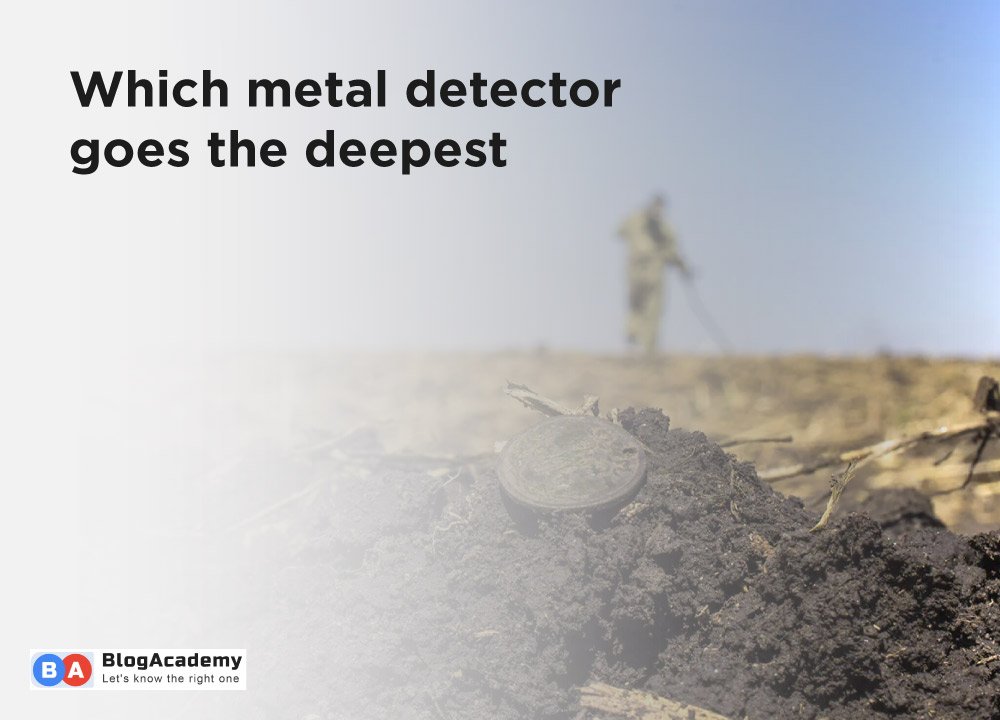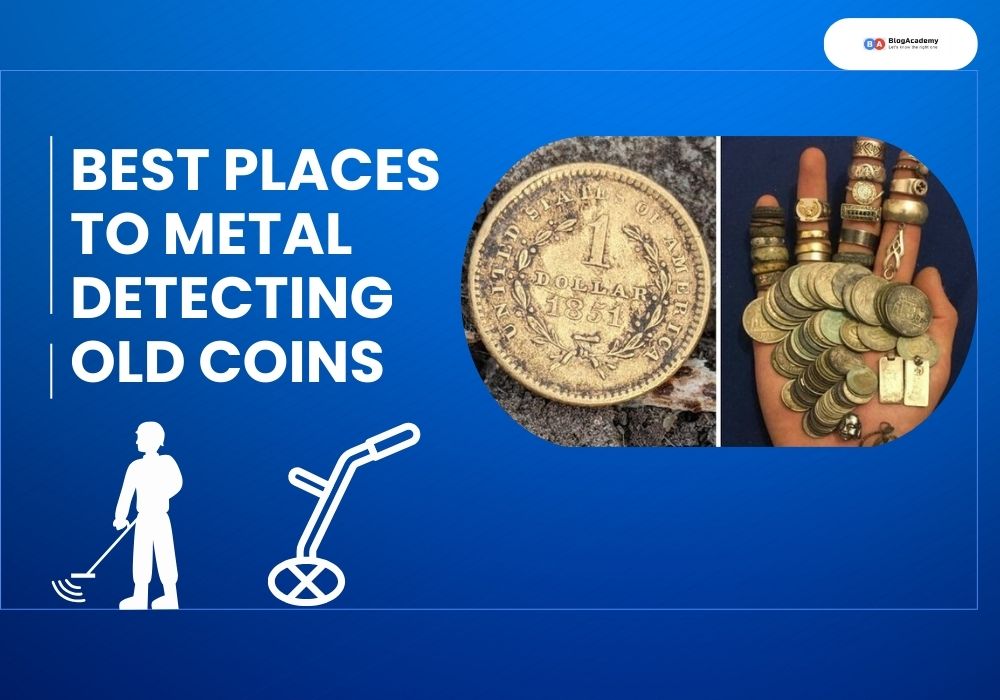Metal detecting is an exciting hobby that has gained popularity in recent years. Exploring the depth of metal detectors for maximum detection efficiency is very important. However, for metal-detecting severe enthusiasts, finding the deepest targets is the ultimate goal.
There are many different types and brands of metal detectors available. But which one goes the deepest? In this blog, we will explore the factors that affect the depth of metal detectors. And the top deep-seeking metal detectors available on the market.
The depth of metal detectors
The depth to which a metal detector can detect metal objects depends on various factors. Including the size and composition of the object, the type and sensitivity of the sensor, and the soil conditions. Therefore, no single metal detector can be considered the “deepest” as it will depend on the specific circumstances.
Some metal detectors, such as pulse induction (PI) detectors, are generally considered to be better suited for deeper detection than others. However, PI detectors can also be less sensitive to smaller or low-conductivity targets.
Some metal detectors are often considered to be among the best for detecting at depth. Include the Minelab GPZ 7000, the Garrett ATX, the Fisher Impulse AQ, and the Nokta Makro Invenio. But, These detectors can be expensive and require more experience to operate effectively.
How deep do metal detectors go?
Metal detectors vary in depth capabilities depending on factors like the detector type, soil composition, and target size. Entry-level detectors may reach depths of 6-8 inches for small objects, while more advanced models can detect larger items at depths exceeding 12 inches.
Metal detectors have different depths for finding buried stuff. Basic ones go about 6-8 inches down, good for coins. Middle-level ones reach 1-2 feet, great for jewelry. Fancy ones can go over 3 feet deep, awesome for big treasures.
Take the Garrett AT Pro, for example—it’s waterproof and spots coins 10 inches below the surface. The depth a detector can go depends on how good it is and what’s hidden in the ground.
Specialized detectors for treasure hunting or archaeological purposes can go even deeper, reaching depths of several feet.
However, it’s essential to note that detection depth isn’t the sole determinant of a detector’s effectiveness; factors like sensitivity, discrimination, and search coil size also play crucial roles in successful metal detection. So How deep can a metal detector go we could understand the concept.
Top Deep-Seeking Metal Detectors
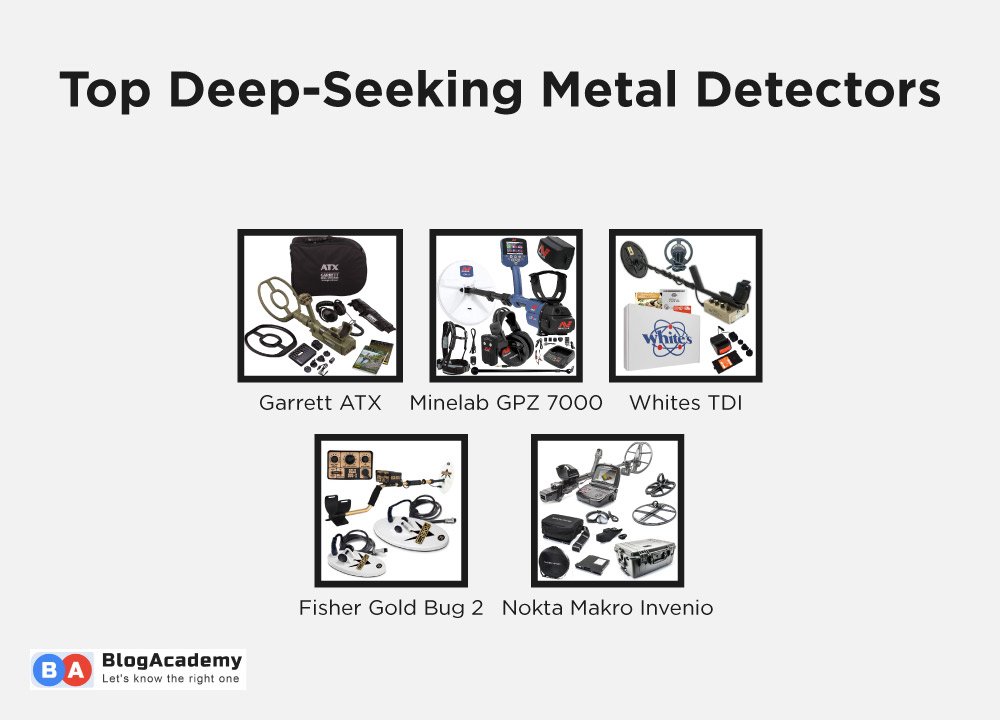
Now that we have covered the factors that affect the depth of metal detectors. let’s look at the top deep-seeking metal detectors available in the market today.
- Garrett ATX: The Garrett ATX is a pulse induction metal detector designed for deep seeking in extreme environments. The Garrett ATX is waterproof and comes with a large 10″ x 12″ DD search coil, which is ideal for detecting larger targets.
- Minelab GPZ 7000: The Minelab GPZ 7000 is a high-performance metal detector that uses zero voltage transmission (ZVT) technology.
- Whites TDI: The Whites TDI is a pulse induction metal detector that can detect targets up to 16 inches deep. It is ideal for gold prospecting and relic hunting in mineralized soil.
- Fisher Gold Bug 2: The Fisher Gold Bug 2 is a high-performance metal detector that uses VLF technology. The Fisher Gold Bug 2 is lightweight and comes with a 10″ elliptical search coil.
- Nokta Makro Invenio: The Nokta Makro Invenio is a multi-frequency metal detector that can detect targets up to 10 feet deep. The Nokta Makro Invenio is ideal for treasure hunting, relic hunting, and coin shooting.
2 feet deep metal detectors
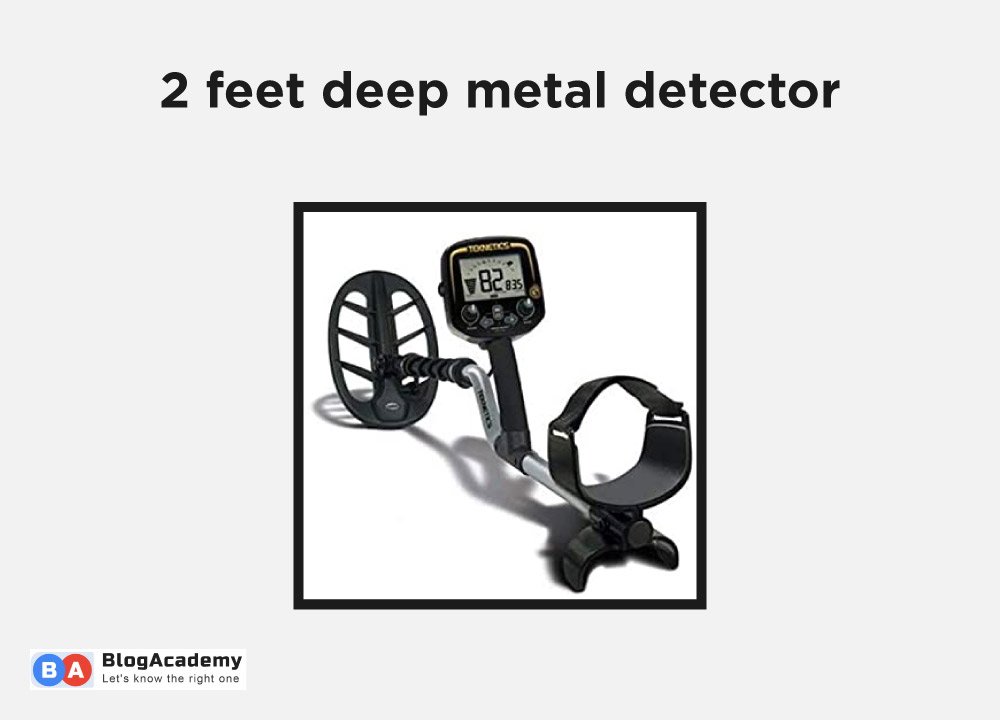
Two-foot-deep metal detectors are devices designed to detect metallic objects buried in the ground up to two feet. These detectors are ideal for hobbyists, treasure hunters, and professional archaeologists who want to locate buried artifacts, coins, or relics.
Fisher F22 is the best example of a two feet deep metal detector
- Featuring a lightweight design and easy-to-use controls, making it a great option for beginners.
- Large LCD display that provides easy-to-read target ID numbers and depth indicators.
- The detector also has a waterproof search coil, making it suitable for use in shallow water.
Another example of a two-foot-deep metal detector is the Garrett Ace 300.
- Garrett Ace 300 has a high-resolution iron discrimination feature.
- Large search coil and a digital target ID that provides a more precise identification of targets.
- It has an adjustable frequency feature that enables users to tune the detector to their specific needs.
Overall, two-foot-deep metal detectors are useful tools for anyone interested in exploring the world of metal detecting. These two models provide great options for both beginners and more experienced users.
5 feet deep metal detectors
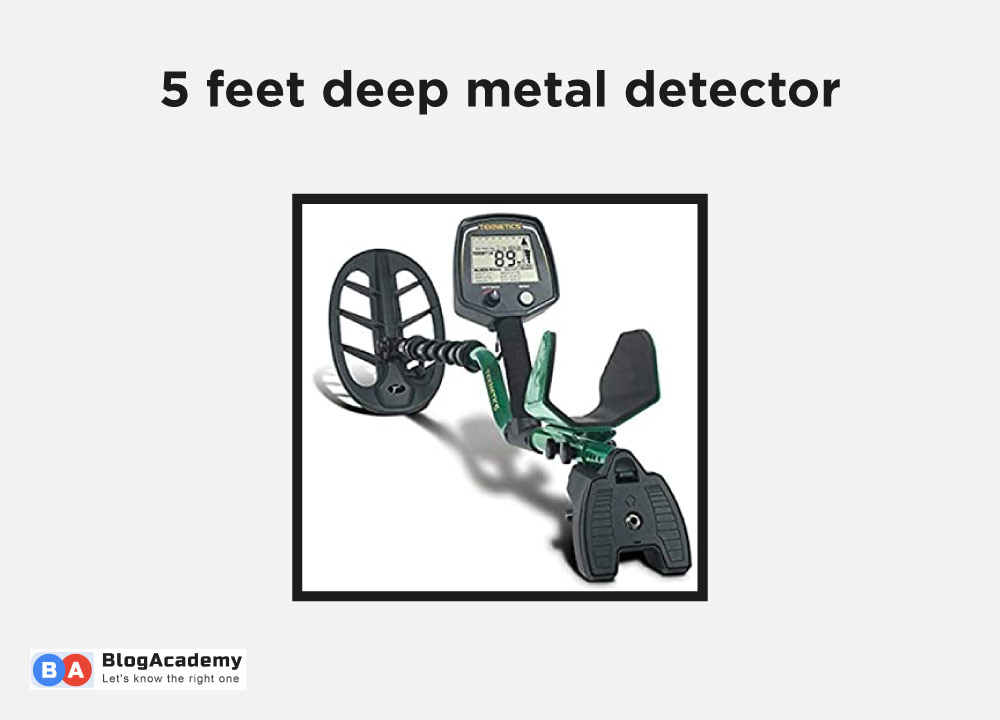
A 5-foot-deep metal detector is a type of metal detector that is designed to detect metal objects buried up to 5 feet deep in the ground. These detectors use advanced technology to detect metal objects in the ground. Making them ideal for various applications such as archaeology, treasure hunting, and industrial use.
Fisher F75 is the 5 feet metal detector
Specification:
- LCD screen that displays the type of metal detected.
- The frequency range of 13kHz
- It is suitable for detecting a variety of metals, including gold, silver, and bronze.
Another 5-foot-deep metal detector example is the Garrett AT Pro.
- This metal detector is designed for use in all types of terrain, including saltwater beaches and highly mineralized soil.
- That allows you to easily differentiate between ferrous and non-ferrous metals.
- It can quickly detect multiple targets in close proximity to each other.
Overall, a 5-foot-deep metal detector is an essential tool for anyone who is serious about metal detecting.
10 feet deep metal detector
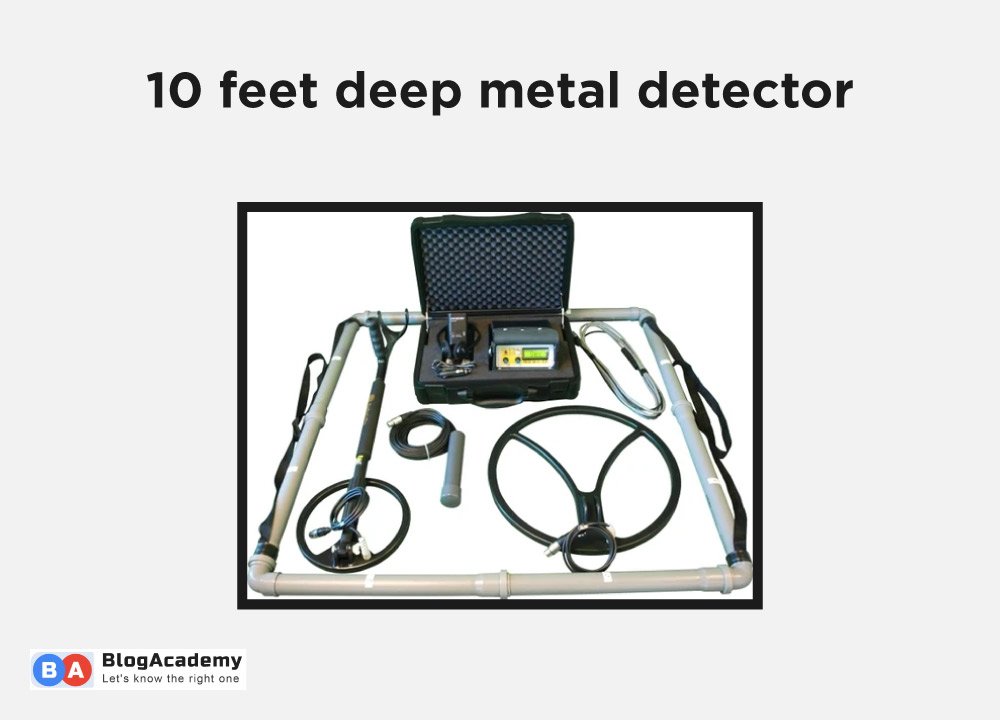
A 10-foot-deep metal detector is a tool designed to detect metal objects buried deep in the ground. These types of metal detectors are used by archaeologists, treasure hunters, and prospectors to locate valuable artifacts or minerals hidden beneath the surface.
Garrett ATX is the best one 10 feet deep metal detector
- Garrett ATX has a maximum depth detection of up to 20 feet.
- It is making suitable for both deep-seated targets and shallow targets.
- The ATX features pulse induction technology, which provides superior sensitivity and depth penetration.
- Built with a rugged design that allows it to withstand harsh environmental conditions.
- Waterproof up to a depth of 10 feet, making it ideal for detecting metal objects in shallow water, such as rivers and lakes.
- Built-in speaker and headphone jack for audio feedback.
Overall, a 10-foot-deep metal detector such as the Garrett ATX is a powerful and reliable tool for anyone looking to uncover buried treasures or artifacts.
20 feet deep metal detector
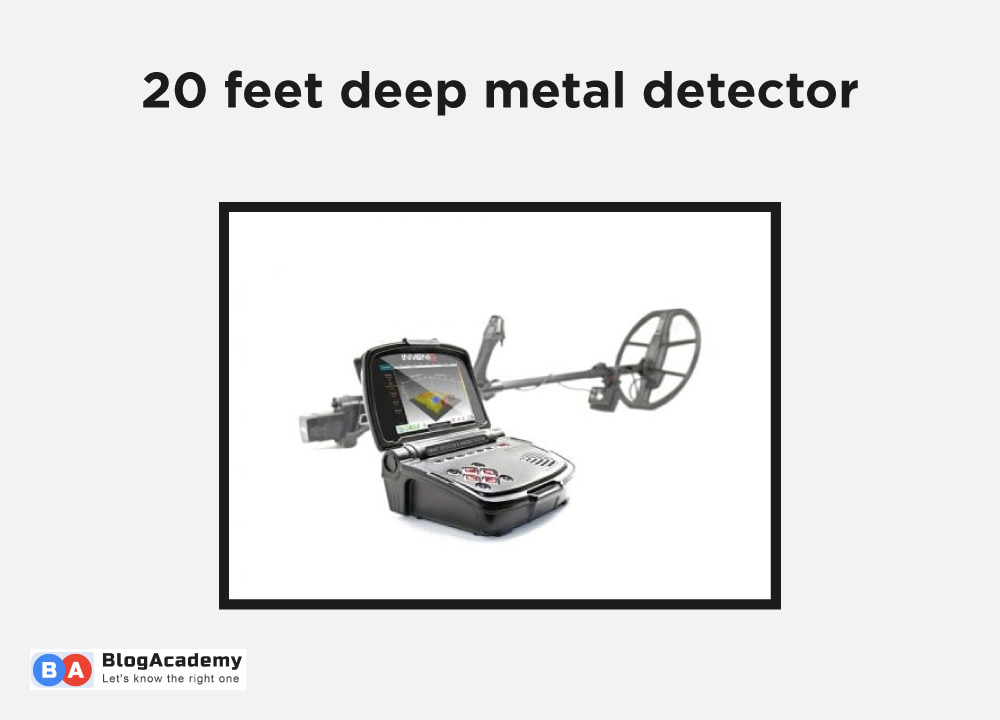
A metal detector that can penetrate up to 20 feet underground is a powerful tool that can be used in a variety of applications. Whether you’re searching for buried treasure, locating pipes or cables, or investigating archaeological sites, a metal detector with this level of depth can be an invaluable asset.
Garrett GTI 2500 is the 20 feet deep metal detector
Specification:
- Garrett GTI 2500 advanced metal detector is equipped with cutting-edge technology.
- It allows the detection of metals at great depths and uses pulse induction technology.
- Features advanced digital signal processing and automatic ground balancing.
- It also has multiple search modes, allowing you to customize your search based on the type of target you’re looking for.
- Garrett GTI 2500 is also designed for comfort and ease of use.
Overall, a 20-foot-deep metal detector like the Garrett GTI 2500 can be an essential tool for anyone who needs to locate buried metals at great depths.
In The End
In conclusion, there is no definitive answer as to which metal detector goes the deepest as it depends on various factors. Such as the size of the coil, the frequency range, the ground condition, and the type of metal being detected. However, some metal detectors such as the Minelab GPX 5000, Garrett ATX, and Nokta Makro Invenio Pro are known for their exceptional depth capabilities. It is important to note that even the most advanced metal detectors may not always detect objects at their maximum depth, and proper technique and experience can also play a crucial role in achieving optimal depth. Ultimately, selecting a metal detector with the appropriate features for your specific needs and preferences is key to maximizing performance and detecting success.

